DON’T take it personally. That, in effect, was the message on Tuesday from UK banking group Barclays as it reported abysmal results — and announced its intention to trim down its 62% stake in Barclays Africa, the group that still trades, for the most part, under the Absa brand.
Jes Staley, who took over as Barclays CE in December, is undertaking a radical restructuring to narrow the group’s focus largely to investment banking.
It is a move that one analyst described as desperate, rather than strategic, saying it was prompted by losses and impairments and a dearth of capital to support its portfolio of existing businesses.
The group had to sell something, and Barclays Africa was chosen.
Mr Staley on Tuesday reassured the market that the group would execute the selldown over two to three years, and would be willing to hold on to a minority stake.
He was at pains too — as was Barclays Africa CE Maria Ramos — to emphasise that the exit was not a response to SA’s political turmoil, nor because of a lack of confidence in SA.
There’s plenty of truth in that. And Barclays’s decision is a reflection of just how extreme global banking regulation has become in the wake of the financial crisis.
This was captured in the big difference between the return on equity. Barclays Africa reported a healthy 17%, and its parent reported a much lesser 8.7%.
The difference is due to a range of capital charges and levies that Barclays is required to hold against its investment in Barclays Africa.
The requirements are steep because it is classed as a globally systemically important financial institution (a Sifi, as they’re known in current banking jargon).
The effect is that although Barclays owns only 62% of the African subsidiary, and is entitled to only 62% of the rewards by way of dividends, the regulators require it to hold capital to support this investment as if it owned 100%.
This is not a good bargain, especially for a group that has plenty of trouble elsewhere in its global operations.
The Johannesburg-based banking group has a very strong franchise in SA, and has built up a significant platform across Africa since it took over Barclays’s other African operations in 2013.
Banking the African continent should be an attractive investment proposition for the global group, which, analysts point out, still performed better for Barclays than its investment banking arm.
That has a return on equity of less than 6% and has to operate in a highly competitive, heavily regulated market.
All of which raises some questions about Mr Staley’s confidence in SA.
He has said Barclays is looking to cut its stake to a level at which it can deconsolidate its Barclays Africa stake — possibly to about 20%.
It is early days yet and parent and subsidiary will no doubt be probing a range of options.
But if Mr Staley’s problem were a 62% return on a 100% capital charge, why not raise the stake to 100%, instead of taking it down to 20%?
Of course, Barclays may not have the capital to do that. But the reason is surely to do at least in part with SA not being top of anyone’s list as an investment destination right now.
So there are no easy reassurances in Barclays’ efforts to boost confidence.
Meanwhile, though, the domestic banking group is in good health.
And, while managing the Barclays exit will be a significant challenge — one that could well affect customers — perhaps, the Barclays exit will provide opportunities to bring in new shareholders and to undertake exciting ventures.
Once the locals recover from the exit shock, it could well be time for some creative thinking.
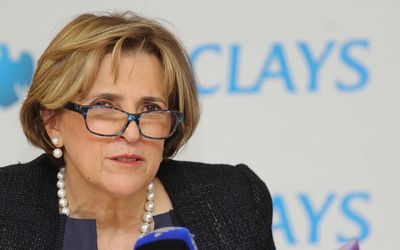
Barclays Africa CEO Maria Ramos speaks at the group’s results presentation on Tuesday.
Picture: MARTIN RHODES
DON’T take it personally. That, in effect, was the message on Tuesday from UK banking group Barclays as it reported abysmal results — and announced its intention to trim down its 62% stake in Barclays Africa, the group that still trades, for the most part, under the Absa brand.
Jes Staley, who took over as Barclays CE in December, is undertaking a radical restructuring to narrow the group’s focus largely to investment banking.
It is a move that one analyst described as desperate, rather than strategic, saying it was prompted by losses and impairments and a dearth of capital to support its portfolio of existing businesses.
The group had to sell something, and Barclays Africa was chosen.
Mr Staley on Tuesday reassured the market that the group would execute the selldown over two to three years, and would be willing to hold on to a minority stake.
He was at pains too — as was Barclays Africa CE Maria Ramos — to emphasise that the exit was not a response to SA’s political turmoil, nor because of a lack of confidence in SA.
There’s plenty of truth in that. And Barclays’s decision is a reflection of just how extreme global banking regulation has become in the wake of the financial crisis.
This was captured in the big difference between the return on equity. Barclays Africa reported a healthy 17%, and its parent reported a much lesser 8.7%.
The difference is due to a range of capital charges and levies that Barclays is required to hold against its investment in Barclays Africa.
The requirements are steep because it is classed as a globally systemically important financial institution (a Sifi, as they’re known in current banking jargon).
The effect is that although Barclays owns only 62% of the African subsidiary, and is entitled to only 62% of the rewards by way of dividends, the regulators require it to hold capital to support this investment as if it owned 100%.
This is not a good bargain, especially for a group that has plenty of trouble elsewhere in its global operations.
The Johannesburg-based banking group has a very strong franchise in SA, and has built up a significant platform across Africa since it took over Barclays’s other African operations in 2013.
Banking the African continent should be an attractive investment proposition for the global group, which, analysts point out, still performed better for Barclays than its investment banking arm.
That has a return on equity of less than 6% and has to operate in a highly competitive, heavily regulated market.
All of which raises some questions about Mr Staley’s confidence in SA.
He has said Barclays is looking to cut its stake to a level at which it can deconsolidate its Barclays Africa stake — possibly to about 20%.
It is early days yet and parent and subsidiary will no doubt be probing a range of options.
But if Mr Staley’s problem were a 62% return on a 100% capital charge, why not raise the stake to 100%, instead of taking it down to 20%?
Of course, Barclays may not have the capital to do that. But the reason is surely to do at least in part with SA not being top of anyone’s list as an investment destination right now.
So there are no easy reassurances in Barclays’ efforts to boost confidence.
Meanwhile, though, the domestic banking group is in good health.
And, while managing the Barclays exit will be a significant challenge — one that could well affect customers — perhaps, the Barclays exit will provide opportunities to bring in new shareholders and to undertake exciting ventures.
Once the locals recover from the exit shock, it could well be time for some creative thinking.



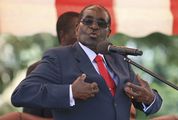

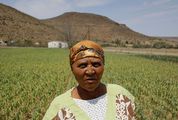
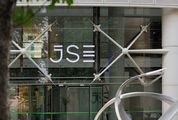

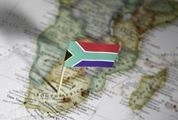












Change: 0.80%
Change: 0.61%
Change: -0.25%
Change: 0.13%
Change: 4.02%
Data supplied by Profile Data
Change: 1.13%
Change: 0.37%
Change: 0.80%
Change: 0.00%
Change: 0.33%
Data supplied by Profile Data
Change: -2.03%
Change: -1.51%
Change: -1.45%
Change: -2.26%
Change: -0.91%
Data supplied by Profile Data
Change: 0.07%
Change: 3.71%
Change: 2.65%
Change: 3.36%
Change: 4.99%
Data supplied by Profile Data